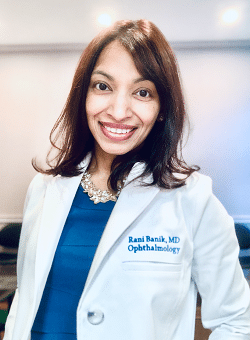
Vision is one of our most precious senses, yet millions of people don’t think about protecting their eyes until problems arise. Globally, 2.2 billion people live with vision impairment — nearly half of which is preventable. In the U.S., age-related macular degeneration (AMD) affects almost 20 million people, with 1 in 10 adults over 50 showing early signs. Conditions like glaucoma, cataracts, and dry eye disease are often accepted as unavoidable parts of aging, but they don’t have to be. Natural health solutions offer a powerful path to preserving your vision, preventing disease, and seeing clearly for years to come.
Misconceptions About Eye Diseases
One of the biggest misconceptions about vision health is that only older adults develop eye diseases. However, vision problems can affect anyone, from infants to seniors. While cataracts and AMD are more common in older adults, myopia, or nearsightedness, is becoming increasingly prevalent in children due to excessive screen time and limited outdoor activities. Additionally, glaucoma, a leading cause of blindness, often begins silently and can affect people at any age, even younger individuals.
Another common mistake people make is not going to an ophthalmologist for regular eye exams. Surprisingly, many eye diseases progress without any symptoms whatsoever in their early stages, making routine checkups crucial for early detection. Conditions such as diabetic retinopathy and glaucoma can cause irreversible damage before noticeable vision loss occurs. A comprehensive eye exam is the only way to detect these conditions early and take preventive action.
The Role of Nutrition in Eye Health
While most people associate carrots with good vision, a well-rounded diet is necessary for optimal eye health. Carrots contain beta-carotene, which converts to vitamin A to support vision. However, our eyes require a variety of nutrients to function optimally. Lutein and zeaxanthin, found in leafy greens like spinach and kale, protect against oxidative stress and filter harmful blue light from screens. Omega-3 fatty acids, found in fatty fish, like salmon, reduce inflammation and help alleviate dry eye symptoms.
Bioflavonoids – plant-based compounds with antioxidant properties – also play an important role in eye health. Quercetin, found in apples and onions, can help fight inflammation in the eyes, while resveratrol, found in red grapes and berries, may protect the retina from oxidative stress. Citrus bioflavonoids, present in oranges and lemons, can support healthy blood vessels in the eyes, potentially reducing the risk of conditions like diabetic retinopathy.
A diet rich in these nutrients can help prevent or slow the progression of eye diseases. However, many people struggle to get enough of these nutrients from food alone. Supplements help fill the gap, particularly for those at risk of AMD, cataracts, or dry eye syndrome. In addition to a nutrient-rich diet, staying hydrated is key. Dehydration can lead to dry, irritated eyes, so drinking enough water throughout the day is crucial.
Digital Eye Strain: The New Epidemic
With Americans spending an average of 7 to 9 hours a day on screens, digital eye strain is a modern epidemic. Symptoms include dry eyes, blurred vision, difficulty focusing, and headaches blue light from digital devices can also disrupt sleep patterns and may contribute to vision issues. To protect your eyes, follow the 20-20-20 rule: every 20 minutes, look at something 20 feet away for at least 20 seconds. Adjusting screen brightness, increasing blink rates, and using artificial tears can also help reduce eye strain.
Additionally, reducing screen time, especially before bed, can help mitigate the negative effects of screentime on sleep and eye health. Taking frequent breaks from the screen and practicing select eye exercises, can help relieve eye tension and fatigue.
Preventing Common Eye Diseases
Let’s take a closer look at some of the most common eye diseases I encounter with patients — conditions you should know about to protect your vision.
Age-Related Macular Degeneration (AMD)
AMD is a leading cause of vision loss in adults over the age of 50. The condition damages the macula, the part of the eye responsible for central vision. While genetics play a role, lifestyle choices significantly impact risk. Smoking, a poor diet, and excessive sun exposure increase the likelihood of developing AMD. Consuming antioxidant-rich foods and taking macular carotenoid supplements such as lutein and zeaxanthin can help slow its progression. Protecting your eyes from UV rays by wearing sunglasses and wide-brimmed hats when outdoors is another preventive measure.
Glaucoma
Commonly known as the silent thief of sight, glaucoma gradually damages the optic nerve and can lead to blindness if left untreated. Since glaucoma often progresses without symptoms, regular eye exams are essential. Managing blood pressure, exercising regularly, and consuming foods rich in bioflavonoids may support eye pressure regulation and nerve health. Avoiding tight neckwear and prolonged head-down positions, as often performed in downward dog or headstands during yoga, can decrease the risk of spikes in eye pressure, a risk for glaucoma.
Cataracts
Cataracts cause clouding of the eye’s lens, leading to blurry vision. While aging is the primary risk factor, oxidative stress and UV exposure can accelerate cataract formation. A diet high in vitamin C, found in citrus fruits, and vitamin E, found in nuts and seeds, can help slow their development. Reducing UV exposure by wearing sunglasses is another preventive measure. Incorporating foods high in glutathione, such as asparagus, avocados, and spinach, can also play a role in protecting against cataracts. Research suggests that people with higher dietary intake of glutathione have a lower incidence of cataract formation.
Dry Eye Syndrome
Dry eye disease affects millions of people, especially those who spend long hours in front of screens. Omega-3 fatty acids from fish oil supplements or flaxseeds can improve tear production and eye lubrication. Staying hydrated and using humidifiers in dry environments also help alleviate symptoms. Blinking more frequently, particularly when using digital devices, can prevent excessive tear evaporation and maintain moisture on the eye’s surface.
Empowering People with Knowledge
Despite the growing prevalence of eye diseases, public awareness remains low. That’s why events like the Eye Health Summit, taking place
Topics will range from the impact of digital screens on vision to the role of nutrition and lifestyle changes in preventing eye diseases, and you’ll learn about emerging treatments and technologies. The summit is open to everyone to register at: www.theeyehealthsummit.com, making critical eye health knowledge accessible to those who may not regularly visit an eye doctor.
Taking Action for Lifelong Vision
Experiencing problems with your vision is something everyone will experience in their lifetime, whether it’s needing glasses, developing cataracts, or dealing with dry eye syndrome. However, preventative care can make a significant difference. By prioritizing nutrition, reducing screen time, and getting regular eye exams, you can take proactive steps to safeguard your eye health.
Eye health is an investment in your future. Whether it’s reading a book, driving, or simply recognizing a loved one’s face, protecting your sight ensures you can continue doing the things you love, with the ones you love, for years to come.


Leave a Reply